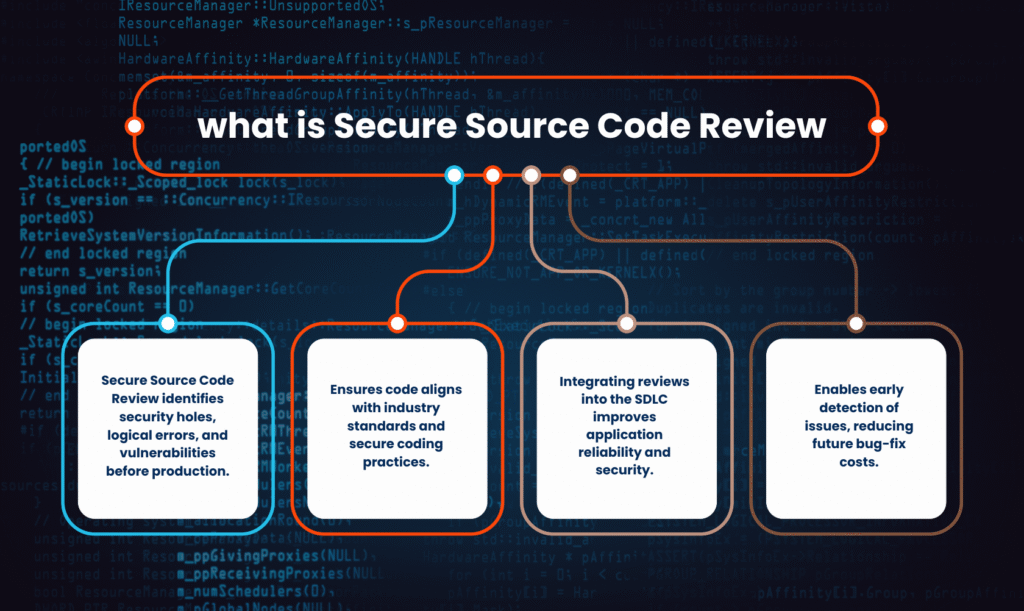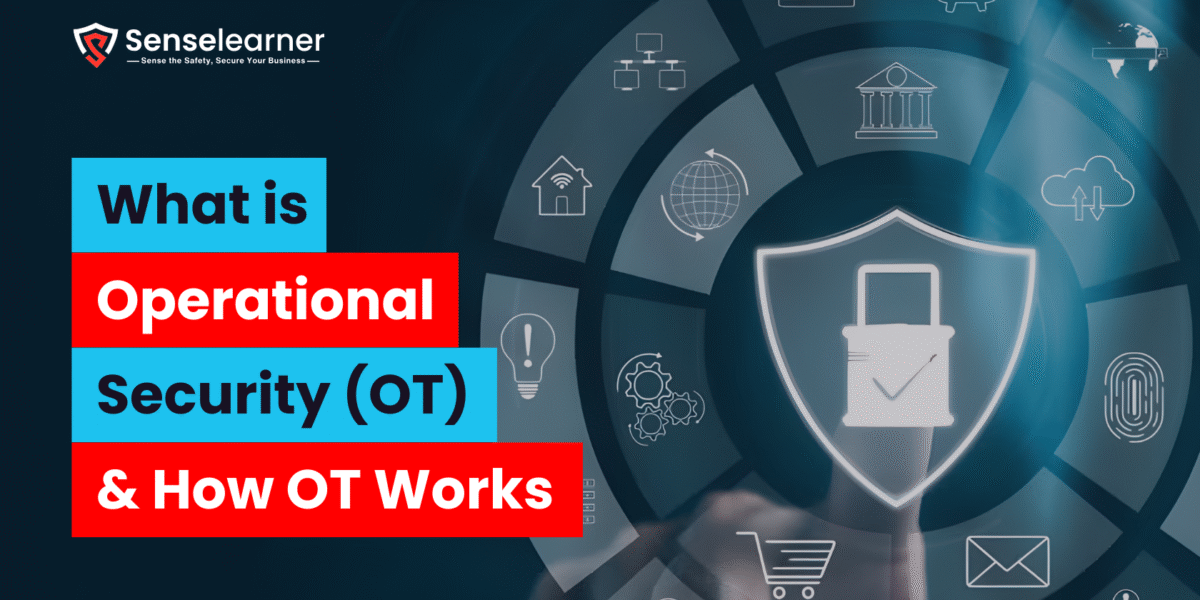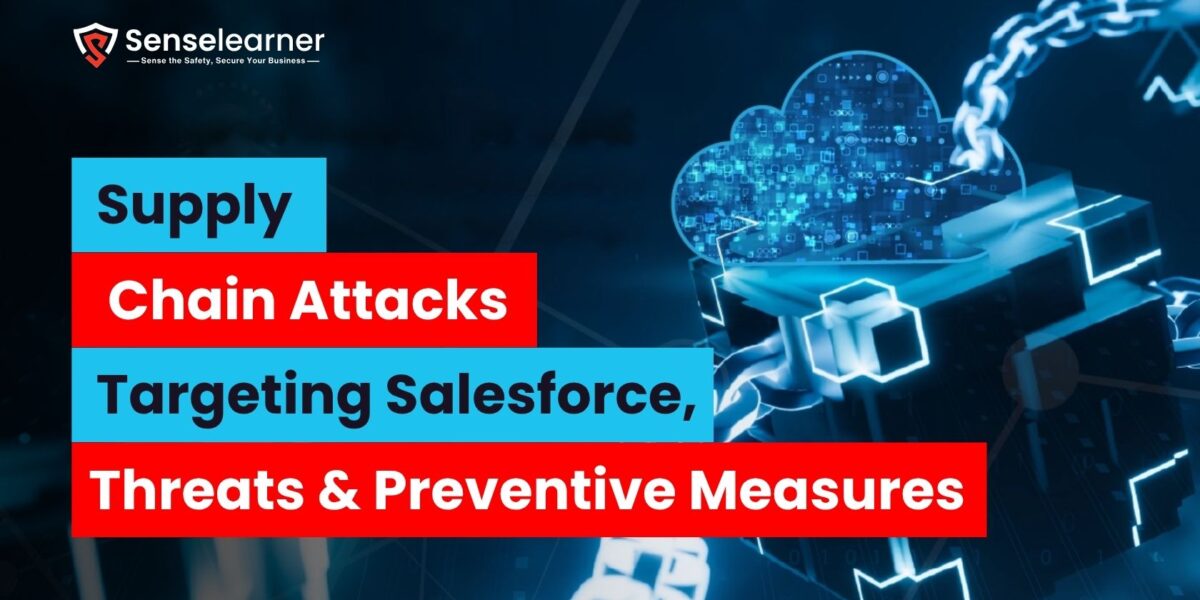Table of Contents
what is Secure Source Code Review

Finding security holes, logical mistakes, and vulnerabilities in a software application’s source code before it is put into production requires a process called Secure Source Code Review. Analyzing code to make sure it conforms to industry standards and secure coding practices is part of it. Including safe code reviews in the Software Development Lifecycle (SDLC) guarantees reliable, secure programs, lowers the cost of bug fixes later, and aids in early problem detection.
Common Vulnerabilities found in code reviews
The most frequent and harmful flaws found during code reviews are SQL Injection, Cross-Site Scripting (XSS), and Buffer Overflow; if these flaws are not fixed, they can all result in major security breaches. These problems are frequently caused by unsafe coding techniques, inadequate input validation, or improper error management. Using the OWASP Top 10, which identifies the most important online application security vulnerabilities, keeps teams up to date on new developments. Breviews play.
Why Code review is a Developer’s responsibility too
Code review is a shared duty that developers must actively take; it is not solely the responsibility of the security team. Security is increasingly incorporated early in the development process thanks to the growth of DevSecOps and the shifting left theory. This implies that developers must write and review code with vulnerabilities in mind from the beginning, adopting a security-first mentality. Developers may lower risk, save money, and guarantee quicker delivery of secure software by spotting problems early. Giving developers additional control over security strengthens and fortifies the software lifecycle as a whole.
Also visit saas-security-testing-key-methods-and-tools
Tools and Framework for Secure Code Review
Strong technologies like SonarQube, Checkmarx, Fortify, and Brakeman, which automate vulnerability identification and enforce coding standards, improve secure code review. These tools range from open-source alternatives that are inexpensive to use to powerful enterprise solutions that provide compliance assistance and deeper analytics. Many of them have direct integrations with well-known IDEs like IntelliJ or VS Code, allowing for real-time scanning and immediate development feedback.
How students can learn Secure Code practices early
By incorporating code reviews into coursework and taking part in practical exercises like Capture The Flag (CTF) challenges, GitHub collaborations, and secure coding workshops, students can begin learning secure coding methods at an early age. Free courses and certifications that provide a solid foundation in application security are available on platforms such as OWASP and CodePath. In addition to enhancing coding abilities, early exposure to these techniques gets students ready for development careers in the real world where security is a crucial duty.
Also visit top-10-network-security-tools-you-must-know
Benefits of Secure Code review in Agile environment
Secure code reviews have important benefits in agile settings, such as quicker issue resolution within sprints, which enables teams to identify and address issues before they become more serious. Early detection of security vulnerabilities avoids delays later in the development cycle and drastically lowers remedial costs. Frequent code reviews also foster teamwork and shared accountability, assisting security teams, developers, and testers in creating software that is safer and of higher quality without sacrificing agility.
How Secure Code review boosts employability

Since conducting secure code reviews is a widely sought-after talent in both development and cybersecurity professions, it greatly improves employability. It demonstrates your ability to proactively detect vulnerabilities and develop secure, maintainable code. During interviews, candidates who can talk about actual tools they’ve used (like SonarQube or Fortify), security audits, or issues they’ve fixed stand out. Including this experience on your resume shows that you have a solid grasp of contemporary secure development techniques in addition to technical proficiency.
The Cost of ignoring code reviews: Real-Word incidents
Ignoring code reviews can have disastrous real-world repercussions, as seen by events like Heartbleed, which exposed millions of users’ data due to a basic coding error, and the Equifax hack, which was brought on by an unpatched vulnerability. Massive monetary losses, fines, and long-term harm to the reputation of the business were the outcomes of these mistakes. The most important lesson is that if secure code reviews are skipped, serious problems may go unnoticed, transforming minor errors into major catastrophes. To protect stakeholder trust and processes, regular, comprehensive evaluations are crucial.



